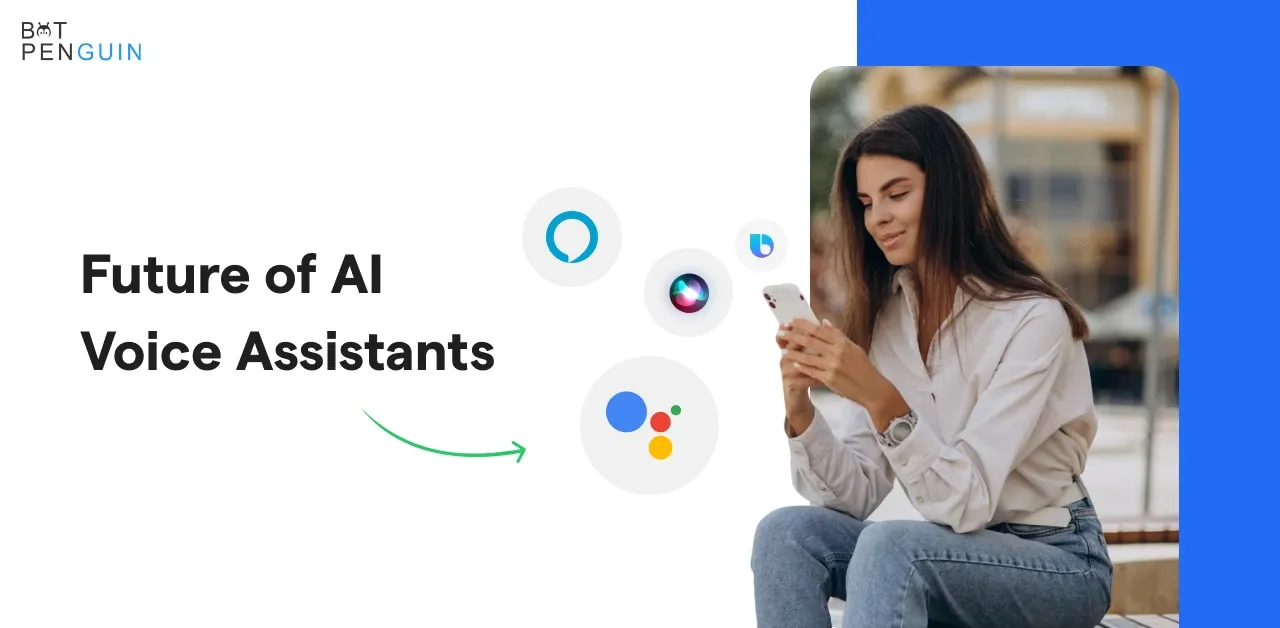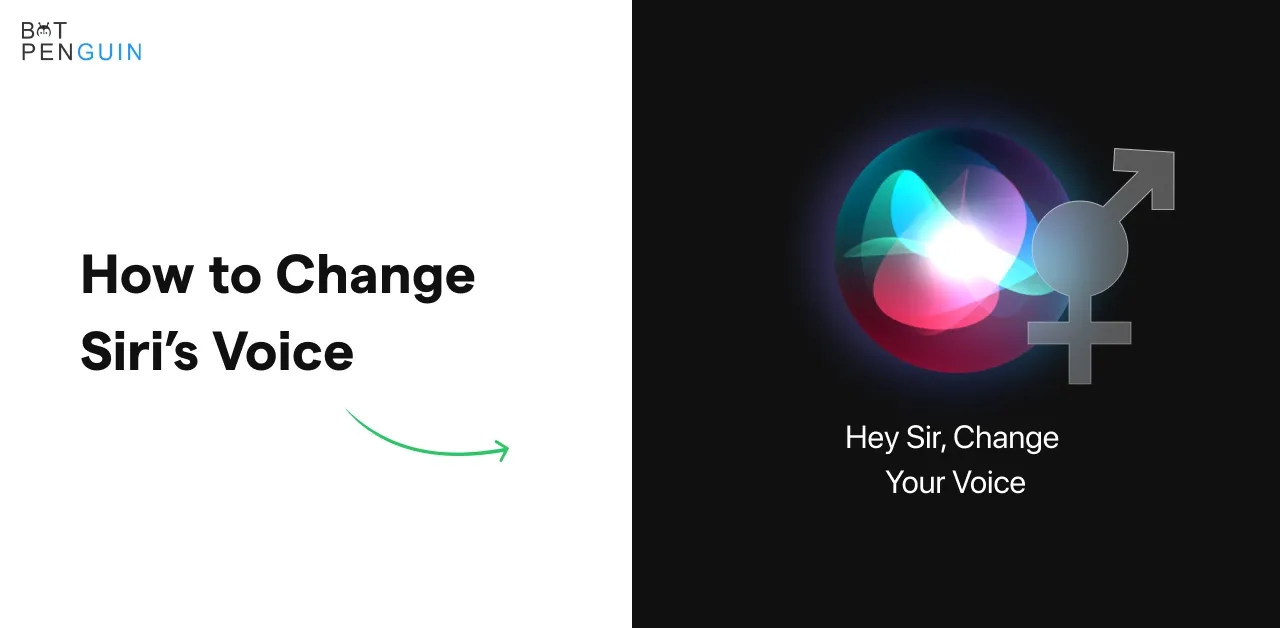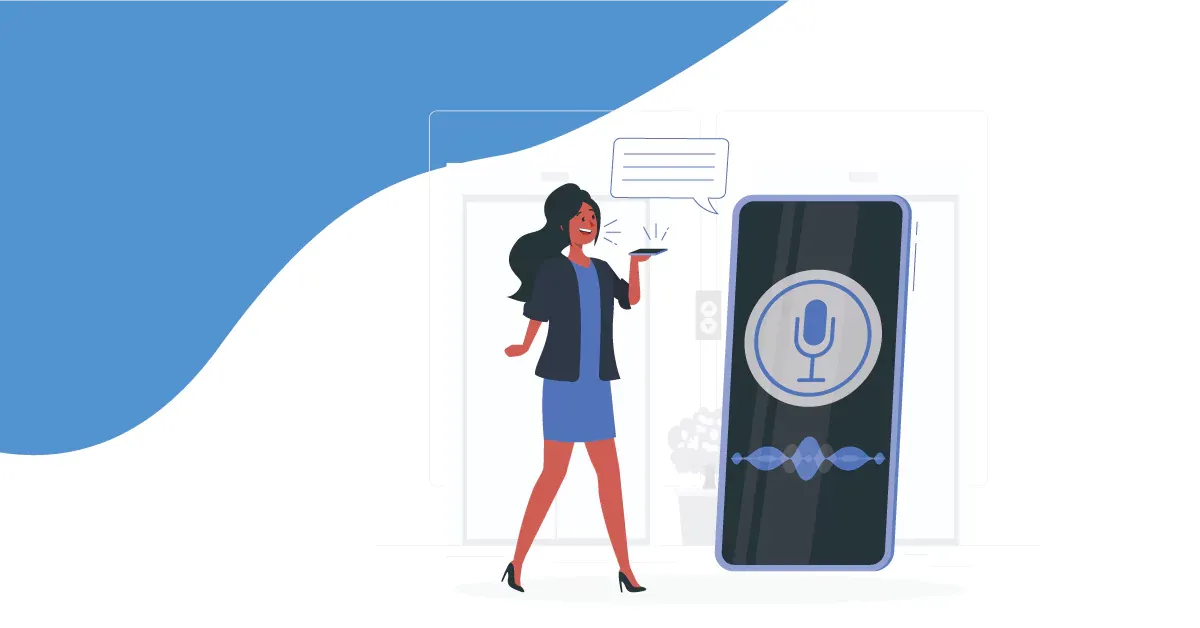Welcome to our comprehensive guide on Contact Centers in 2023!
In today's fast-paced business landscape, contact centers ensure customer satisfaction and drive business success.
With the ever-increasing expectations of customers and advancements in technology, the role of contact centers is evolving rapidly, making it crucial for businesses to keep up with the latest trends and best practices.
In this blog, we will cover everything you need to know about contact centers in 2023, from their basics to the latest trends and technologies transforming the industry.
Whether you are a business owner looking to improve your customer service operations or a contact center professional seeking to stay up-to-date with the latest developments in the industry, this guide has got you covered.
So, whether you are new to the world of contact centers or a seasoned professional, join us as we explore the latest trends and best practices in the industry and discover how your business can benefit from them in 2023 and beyond.
What is a Contact center?
Organizations manage all client interactions across all channels from a central location known as a contact center.
Their main goal is to provide customers with efficient and effective sales, customer, and technical support.
In addition to one or more call centers, contact centers may incorporate emails, webchats, and social media interactions as additional consumer contact channels.
Moreover, contact centers are frequently incorporated into firms' customer relationship management (CRM) plans.
Contact centers are becoming more crucial as customers demand businesses to be continually accessible across several media, not just over the phone.
Using an omnichannel strategy, contact centers may improve customer service, boost productivity, and gain deeper insights into the demands and behaviors of their clients.
How do call centers operate?
Agents who manage multichannel customer support, including calls, emails, chat, voice over IP (VoIP), and online help, are typically found in contact centers.
Similar to call centers, contact centers also reach out to clients via their preferred channels in addition to taking calls.
The following are important characteristics of a contact center:
- Automated call distributor (ACD) systems let contact center employees take more calls while ensuring customers have a good experience (CX).
- Real-time reports let contact centers monitor and assess customer satisfaction and agent performance across all channels being used.
- Interchangeable assignments allow agents who share contacts and objects to collaborate while retaining individual stations. Scripts offer agents a structure for effectively supporting callers and generating sales.
What distinguishes a Contact center from a Call center?
Both call centers and contact centers are customer service hubs. The two terms should be used differently, although many people do.
The main distinction is that contact centers provide omnichannel customer service, whereas call centers exclusively handle inbound or outbound calls.
The modular infrastructure of the contact center enables managers to improve team productivity while providing teams with better protection, more secure data, and more flexibility.
Call centers specifically manage phone interactions, including incoming and outgoing calls, although contact centers perform various tasks.
Call centers typically handle customer service, technical support, or sales interactions like contact centers do.
But businesses can also use them for information collecting, debt or payment collection, fraud prevention, and telemarketing.
What advantages do Contact Centers offer?
Compared to call centers, contact centers have several benefits.
1. Saves both money and time:
Contact centers enable clients to self-serve and resolve their issues via two-way, keyword-driven instant messaging, text messaging, or interaction with a chatbot.
Using self-service, call center workers spend less time on the phone, which lessens client wait times and lowers overall costs.
2. Better data on customers:
Customer profiling can be strengthened via contact centers.
Customers that interact with call centers or contact centers divulge details about their preferences and behavior, which employees can collect and use to enhance the CX of subsequent contacts.
CRM software and contact centers can also be integrated by businesses to increase customer data collection and improve data analysis.
3. Enhanced CX:
Although call center operators can collect data through their calls, contact centers use digital channels, making the process simpler and more efficient.
Customer information is gathered from all channels and combined into a single customer profile by contact center software.
The contact center gathers additional data because most consumers communicate through several channels.
Additional data can help the contact center better route calls and other messages and customize CX for individual callers.
4. IVR:
IVR is an automated digital assistant used in call centers that communicates over the phone using vocal commands and keyboard inputs.
IVR at contact centers frequently makes speaking with a live agent and effectively resolving issues challenging.
IVR, however, is made with CX in mind by contact centers.
Contact center managers create IVR to identify callers' intentions and route them to the most appropriate employee.
IVR can address client concerns and problems without needing live personnel.
Types of Contact centers
1. Telephony hardware centers:
Using actual, on-site servers, businesses can set up and operate hardware contact centers.
As a result, hardware contact centers demand that businesses have enough room and resources to house and manage the servers, reliable disaster recovery plans, and capable hardware update processes.
2. Contact centers run on the cloud:
These contact centers are hosted on the internet servers of cloud providers, and they filter all incoming and outgoing messages.
Agents of contact centers can access cloud-based contact centers from any location with internet connectivity.
These call centers run similarly to regular call centers.
3. Hospitable contact points:
The company outsources the infrastructure to a different business that oversees the systems externally for these contact centers.
This strategy can reduce expenses and up-front upkeep, frequently resulting in a higher ROI.
4. Contact points online:
Agents can operate remotely, thanks to these contact centers. Virtual contact centers reduce costs for the company while giving contact center employees comfort and freedom.
Infrastructure and capacities of contact center
As with hardware centers, businesses frequently develop contact center infrastructure to handle communications on the same property as the contact center.
Instead, businesses can contract with outside entities to host the infrastructure for the three other types.
The business would also own and control the software and hardware in an on-premises situation.
This strategy necessitates manpower and IT investments, which some businesses contract to cloud service providers or hosting businesses.
Operations research, analysis, and mathematical models like queuing theory can be used to improve contact center performance.
Contact centers don't have to offer universal queuing because they can support numerous channels. Instead, they might employ distinct systems with different operational procedures.
The Telephony Technologies
The following technologies are used to maintain and enhance contact center performance:
1. Automatic call distribution:
After analyzing the calls, the ACD system divides incoming calls according to many criteria, such as the number dialed.
2. Email response management system:
Gathers and examines client email questions before forwarding them to the relevant agent.
3. IVR system:
Allows users to input information without human help via a keypad or voice commands.
4. Knowledge management system:
A central database of data that is simple for agents to search, reducing the need for agent training.
5. TTY/TDD communications:
Those who are deaf or hard of hearing can use teletypewriters (TTY) and telecommunications display devices (TDD).
6. Workforce management system:
Aids in scheduling, staffing, and performance management of agents.
Call center software is frequently used in contact center systems.
Virtual call center software, for instance, can be used by virtual contact centers to set up a channel where remote agents can handle phone calls just like they would in a centralized call center.
Contact center software often expands upon the ability to route contact information, track contacts, and gather data, which builds on these fundamental capabilities.
Five9, Avaya, 8x8, Twilio, Talkdesk, and Genesys are well-known contact center software providers.
The upcoming Future of Contact centers
Contact centers must continue to adapt and expand as customers depend on fresh communication methods and technologies.
The following are some trends that have an impact on contact center communications:
1. Social Media:
It's critical for businesses to embrace social media channels because they have become popular customer communication tools like Twitter.
2. Portable access:
Consumers need assistance with communication services that are optimized for mobile devices, including application and text support.
3. Videotelephony:
Customers can video chat with businesses utilizing IP/video telephony services like FaceTime and Zoom, enabling more intimate, face-to-face conversations.
4. Modern analytics:
Analytics are becoming more crucial in anticipating consumer behavior. Businesses can use speech analytics to teach, assess, and monitor their contact center staff.
According to experts, contact centers will increasingly use artificial intelligence (AI) and augmented reality (AR) technologies.
AI research focuses on agent-assist technologies that can listen in on calls, follow agent instructions, crawl customer service records, and provide solutions to customers' concerns in real-time conversations.
AR adds a visual component to interactions between live agents and customers, enabling agents to suggest and demonstrate fixes for technical issues that verbal descriptions over the phone or chat cannot replicate.
Future trend predictions for contact centers
Contact centers saw a significant makeover during the pandemic.
This speed of change will continue to quicken in 2023 as businesses strive to provide the best possible customer experience (CX).
Here are our top 12 picks for the latter.
1. Consumers will anticipate having omnichannel help as a standard:
A unified and smooth experience is provided by omnichannel communication across all platforms, including desktop, mobile, phone, and in-person.
Because omnichannel is customer-focused, it makes it easy to navigate across business touchpoints.
Consumers dislike having to discuss the same problems with different reps. They want the agent to know their history and solve the issue immediately.
In 2023, service will be at its best thanks to agents with access to data across all channels.
This contact center trend will maintain consistent communication across touchpoints and channels for efficient follow-up.
2. Customer experience analytics:
It will become the primary emphasis of contact centers.
To increase overall productivity, traditional contact centers formerly primarily relied on the knowledge of their staff. But this strategy is no longer relevant in the data-driven economy of today.
This is a major change in how contact centers enhance customer experience, deliver improved services, and increase productivity.
Several contact centers will use data analytics tools in 2023 to glean useful information from their measurements.
This contact center trend will enable better-informed customer experience and service level judgments.
3. Personalization:
Businesses that implement hyper-personalization will have an advantage over competitors.
Hyper-personalization mixes AI with current customer data to provide insights.
Businesses can develop unique and individualized customer journeys by utilizing this data for purposeful individualization via a system or human involvement.
For instance, the contact center may send a discount offer to a disgruntled customer whose business may be at risk or who may be unhappy through real-time mood monitoring.
For a more personalized touch, the contact center might instead put the customer to an outbound calling list, guaranteeing that a human representative will make prompt repairs.
There are countless opportunities with this contact center trend.
4. IVR:
All contact centers continue to use Interactive Voice Response (IVR) as their main channel.
It is one of the oldest contact center automation technologies, has been used by organizations for a long time, and will still be widely utilized in 2023.
IVR, however, has benefited from the development of AI.
Processes will be improved due to the integration of the various systems, and advanced IVR solutions, like conversational IVR, will be made available.
In 2023, AI will combine speech recognition with interactive voice response (IVR) platforms, making it easier to route calls to staff members or agents with the most in-depth knowledge of each customer's issues.
For marketers and CX experts, this contact center concept will be an "oldie" but a "goodie" in 2023!
5. Anticipate voice analytics tools to be widely used:
At most contact centers, voice is still the most common form of communication.
Every institution will want to gain from its customers' voice interactions with its agents as CX becomes the key differentiator for organizational effectiveness. Voice analytics are useful in this situation.
It assists in determining whether a customer is irate, agitated, or simply unsatisfied with their interaction with the business.
A company can acquire important business insights by combining big data techniques and voice analysis to analyze a vast volume of call data.
Due to this important contact center trend, it is anticipated that in 2023, more speech analytics technologies, such as Voicebase, CallMiner, etc., will enhance the user/customer experience.
6. The use of live engagement tools will increase:
Customer service's three essential elements are quick response, knowledgeable service representatives, and quick resolution.
When the agent can interact with the consumer live, and in real-time, all of this is simpler.
Identifying the problem is sped up when information is gathered using live engagement techniques like video chat or co-browsing.
Identifying the issue speeds up the distribution of fixes through direct communication and cooperation with the client's browser.
7. Self-service will continue to lighten the load on contact centers and increase CX:
Self-service describes online support without speaking to a customer service agent directly.
Providing a range of self-service choices lowers the number of calls. For instance, implementing a frequently asked questions page on the firm website is a quick and easy self-service solution.
The COVID-19 epidemic sharply increased the need for contact centers and digital support.
Customers have so asked for the capacity to handle their problems and get the information they need independently.
Self-service technologies have since become the primary customer help method, and this contact center trend will last through 2023.
8. Businesses will work to create a real-time customer journey map:
Real-time customer journey mapping enables agents to track the consumer's path across your website while they converse with them.
The agent may better grasp the client's goals and inquiries by looking at the websites the client has visited and session data like "time on page" and "clicks," leading to quicker problem resolution.
This strategy is far more advantageous if a consumer is logged into their account.
Real-time customer journey mapping will be available to businesses in 2023 to help them gather more contextualized data.
Previously exclusive to marketers, this tool will now play a crucial role in contact centers, making it a major trend.
9. Contact centers won't be considered cost centers anymore:
Contact centers are typically viewed as unavoidable expenses, but companies are starting to understand the value that high-quality support can bring to their bottom line.
Contact centers can help businesses generate more income by assisting clients in making large transactions.
Interacting with a contact center representative enables clients to ask additional (or closing) questions and confirm that their chosen products are suitable for their needs while conducting bulk or complicated transactions.
10. The capabilities of contact centers will be closely integrated with text analytics:
In recent years, text messaging has become a more popular means of communication between customers and businesses.
Customers must be able to write to your business through social media, instant messaging, or emails. In 2023, the text will rule, and this contact center trend will assist companies in maximizing their worth.
Regardless of where a text message originates, text analytics examines and monitors all textual communication.
With text analytics, you may instantly assess every textual exchange to spot problems, spot patterns, and make suggestions.
Many in-depth reports are also available to you for assessing quality and developing a CX success program.
11. Contact centers will interact with other business software:
Siloed operations hamper accurate data collection on consumer behavior.
To centralize all client data, contact center systems must be integrated with other business tools, including business intelligence (BI), customer relationship management (CRM), and enterprise resource planning (ERP) solutions.
This year's top trend in contact centers is this.
Integrating your information systems will be crucial in 2023 if you want to create a positive customer experience and give your agents a clear picture of the people they are dealing with.
Conclusion
In 2023, contact centers will continue to play a critical role in customer service and support for businesses across various industries.
With the ongoing technological advancements, contact centers have become more efficient, personalized, and omnichannel-oriented, providing customers seamless experiences.
Adopting AI and automation in contact centers has enabled businesses to handle customer interactions more effectively, reduce response times, and provide personalized solutions.
Conversational AI and chatbots have made self-service options more accessible, allowing customers to resolve simple issues without human intervention.
Contact centers have also embraced omnichannel strategies, allowing customers to interact with businesses through their preferred channels, including social media, email, chat, voice, and video.
This approach has enabled businesses to provide consistent and seamless experiences across all touchpoints, increasing customer satisfaction and loyalty.
In conclusion, contact centers will continue vital to customer service in 2023.
Contact centers will continue to evolve and adapt to meet changing customer needs and expectations, making it essential for businesses to stay updated with the latest trends and innovations in this field.
Look no further if you’re searching for a chatbot that does a better job than IVR.
BotPenguin is an AI-powered chatbot platform that helps businesses automate customer support, lead generation, and sales processes.
With BotPenguin, businesses can improve their customer engagement, reduce response times, and increase conversions.
Try it today and see how it can transform your customer interactions!



